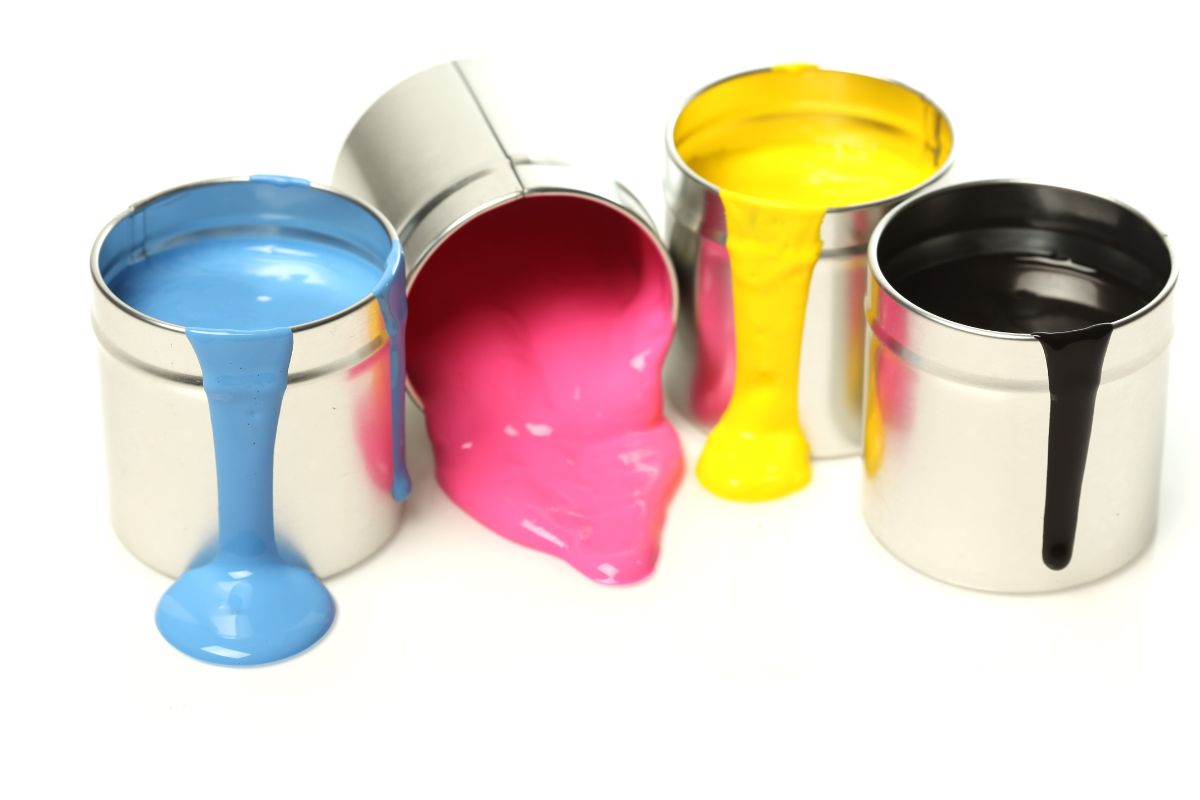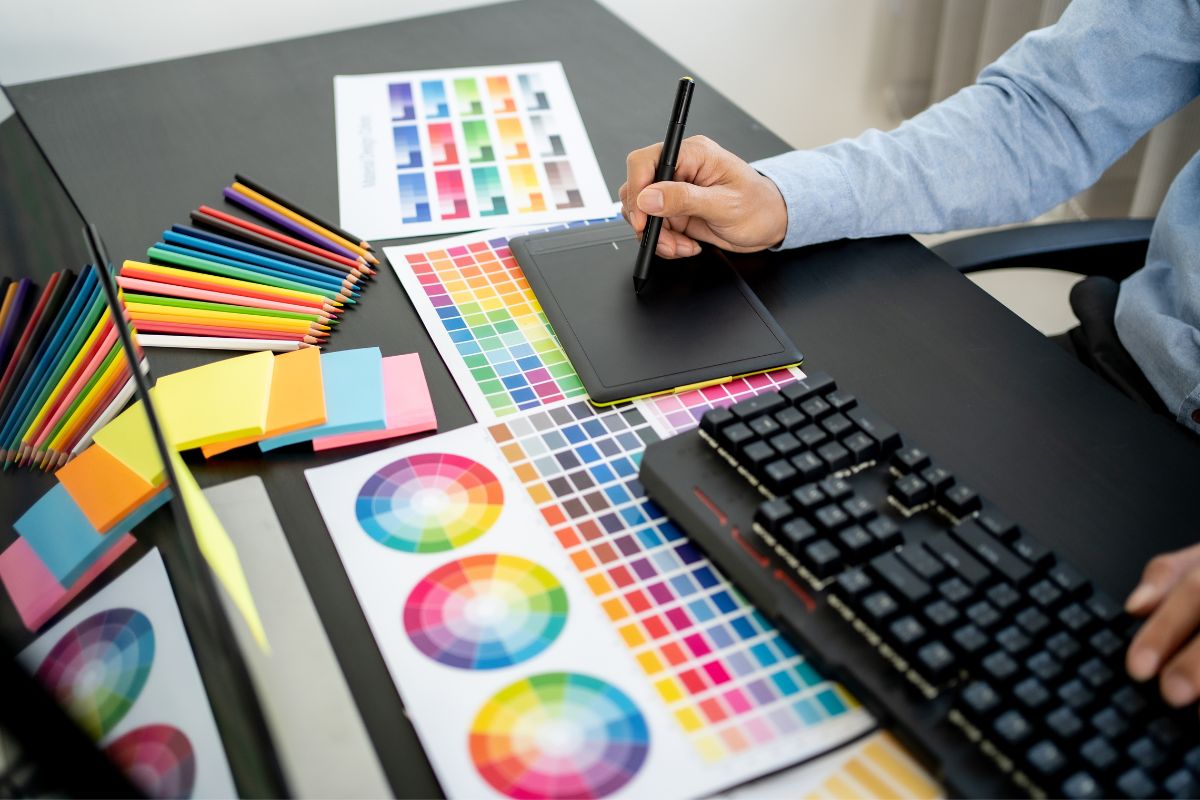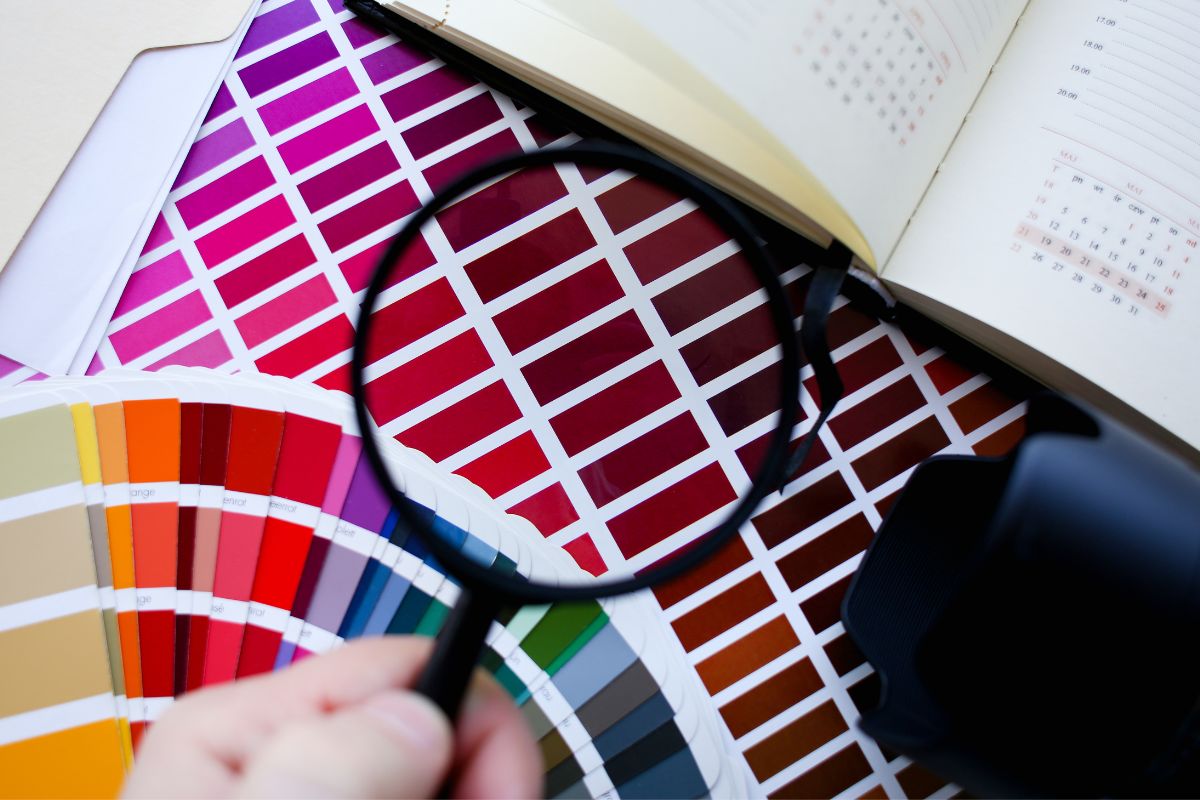A hex code, commonly known as a hexadecimal color code, is a way of specifying colors using a base-16 numeral system. These codes typically consist of a hash symbol followed by six alphanumeric characters. You can use these codes in various applications, particularly in web design, to precisely define colors for fonts, backgrounds, borders, and other graphical elements.
Understanding hex codes is essential for achieving the exact color you desire in your digital projects. Each pair of characters in the hex code corresponds to the red, green, and blue components of the color, respectively. For example, a hex code of #FF0000 represents a vibrant red color because it specifies the maximum value for red and none for green and blue. This system allows for over 16 million unique color combinations, giving you a vast palette to work with in your designs.
You might encounter other formats which include an additional pair of characters representing the alpha channel for transparency, extending the hex code to eight characters. This expanded code offers additional flexibility, allowing you to incorporate transparency into your color specifications.
Understanding Hex Codes
When you encounter the term “hex code” in the context of design or computing, it refers to a hexadecimal format that expresses colors or binary data in a concise and human-readable form. This code is commonly used in HTML and CSS to specify colors, and it holds historical significance in computing for data representation.
Definition of Hex Code
A hex code is typically a six-digit combination of numbers and letters, ranging from 0-9 and A-F, representing a specific color in web design. For example, the hex code #FFFFFF corresponds to the color white. Each pair of digits in a hex code represents one of the three primary colors in additive coloring: red, green, and blue (RGB). Here is how the values correspond to colors:
- The first two digits control the red value.
- The middle two manage the green.
- The last two define the blue.
By adjusting these values, you can create over 16 million unique colors for use in your web designs.
Historical Context of Hexadecimal Usage in Computing
Hexadecimal, a base-16 number system, has been integral in computing due to its efficiency in representing binary data. Each hexadecimal digit can represent four binary digits, or bits, which aligns neatly because computers operate using binary code. A single hex digit can have sixteen possible values (0-9 and A-F), efficiently matching to binary’s 0000 to 1111. This compact representation makes it much simpler for humans to read and understand, especially when dealing with large binary numbers.
In the 1960s, IBM used hexadecimal notation in the architecture of its System/360, one of the most influential computer systems in history. This fostered further adoption of hexadecimal in software development, debugging, and now, web design with HTML and CSS, unfolding a tradition that marries human understandability with computing precision.
HTML and CSS Integration

In the collaborative world of web development, hex codes are a bridge between HTML and CSS, giving you a vast color palette for coding website designs. It’s essential to know how these codes integrate within your HTML structure and CSS styles.
Hex Codes in HTML
When you’re coding an HTML document, hex color codes are used to specify colors within inline styles or within style attributes of elements. For example, if you want to set the background color of a div to black, you would use the hex code #000000 like so:
<div style=”background-color: #000000;”></div>
Here, #000000 is the HTML color code for black in hex format, combining the RGB (red, green, blue) values in a hexadecimal representation.
Hex Codes in CSS
Within a CSS file or in a <style> block within your HTML, hex codes are used to maintain consistency and precision for color-related properties. You can define both element-specific styles and reusable classes. For instance:
/* Element-specific */
h1 {
color: #FF0000; /* Red */
}
/* Reusable class */
.bg-blue {
background-color: #0000FF; /* Blue */
}
The hex codes—#FF0000 for red and #0000FF for blue—illustrate how hex color codes integrate into CSS, allowing for a standard way to express colors across all HTML elements styled by the CSS. Beyond RGB, CSS also supports HSL (Hue, Saturation, Lightness) values, but hex remains a popular choice for its brevity and familiarity among developers.
Understanding Colors and Codes: A Guide to Hex Codes in Web DesignColors and Codes

When you work with digital colors, you’ll encounter Hex codes—a six-digit, hexadecimal format that represents colors in web design and computer graphics.
Primary Color Hex Codes
Red, green, and blue are primary colors in the digital world, often used in various combinations to create a wide spectrum of other colors. Each color has a unique Hex code:
- Red: This vibrant color is represented by #ff0000, ensuring it stands out boldly in design.
- Green: Symbolizing freshness and vitality, its Hex code is #00ff00, a color widely used for its calming effect.
- Blue: Associated with stability and depth, blue’s Hex code is #0000ff, a favorite in a variety of applications.
The simplicity of these Hex codes makes them a fundamental part of any HTML color selection tool or color picker.
Extended Color Palette
Beyond primary colors, Hex codes extend to a full range of shades:
- White: The absence of color, or rather the combination of all colors at full brightness in screens, is #ffffff.
- Black: The complete lack of color light is coded as #000000, often used for text or shadows.
An extended color palette in Hexadecimal color system incorporates countless variations, allowing for precise color communication in digital design. The use of Hex codes ensures that the color you choose through an HTML color tool is consistent across various platforms and applications.
Color Theory in Web Design

When you approach web design, understanding color theory is fundamental. It’s not just about personal preferences; the colors you choose can significantly affect the user experience and the way your website is perceived.
Color Harmony
Achievingcolor harmony is essential in web design. This involves creating a balanced and aesthetically pleasing color scheme that enhances your website’s design without overwhelming the user. There are several methods to establish harmony:
- Complementary Colors: Opposite on the color wheel, they offer strong contrast and high visibility.
- Analogous Colors: Positioned close to each other on the color wheel, they provide a more uniform and coordinated look.
- Triadic Colors: Spaced evenly around the color wheel, creating a diverse yet harmonious color palette.
When you select colors that are harmonious, you ensure that your website is welcoming and easy to navigate.
Color Contrast
Color contrast is the second key element you must consider for effective web design. It involves the difference in color that makes an object (such as text or a button) distinguishable from others and the background. Remember:
- High contrast improves readability and accessibility.
- Contrast can be used to draw attention to important elements, like calls-to-action.
- It also dictates the intensity and vibrance of your website’s display.
Ensuring proper contrast will not only make your design stand out but also enhance the overall user experience by providing clear navigation cues.
Practical Usage

When considering hex codes in practical scenarios, you’re often interacting with a digital color specification that’s essential in web design, graphic design, and other forms of digital media creation.
Hex Code Accessibility
Accessibility in design ensures that your content is perceivable by everyone regardless of their abilities or disabilities. When using hex color codes in your designs, it’s crucial to select color combinations that provide sufficient contrast. Tools like a color picker can assist you in choosing accessible colors by ensuring that text is readable against its background for individuals with visual impairments.
Color Tools and Resources
As a designer or developer, you have an array of tools at your disposal for effective color selection and pairing. HTML color codes are used to define colors for your web pages, and hex codes are a popular format for these specifications. Utilizing color tools can simplify the process – these digital resources may include color palettes, converters, and libraries, allowing you to view and select colors easily for your projects.
Learning and Implementation
The journey of learning how to incorporate hex codes into your work is ongoing. If you’re new to hex codes, begin with understanding how they are formed: three pairs of hexadecimal digits representing the red, green, and blue components. Remember that regular practice is key; therefore, incorporate these codes into your HTML documents to define the colors of your web elements, such as text and backgrounds.
When mastering hex codes, you’ll not only enhance your design aesthetics but also your efficiency in producing visually consistent digital media.
Frequently Asked Questions
Hex codes are a cornerstone in digital design, translating color into a format that computers interpret with precision.
How is a hex code used in web design and digital graphics?
In web design and digital graphics, a hex code is a six-digit combination of letters and numbers that represents a specific color. You’ll use it to ensure consistency in your design elements by providing the exact values for colors.
Can you provide an example of a hex code in use?
An example of a hex code is #FF5733. This particular code is associated with a shade of orange. When you input this code in design software, it will display the exact orange shade described by the hex value.
How do hex codes correspond to paint colors?
While hex codes are primarily used for digital screens, they can be matched to paint colors. Specialty software or online tools allow you to input a hex code to find a corresponding paint color that you can use in physical projects.
How are hex codes implemented for customization on Discord?
On Discord, you can use hex codes to customize your server themes or bots. By entering the appropriate hex code, you ensure your selected color is accurately represented in your customizations.
What is the process to determine a hex code for a specific color?
To determine the hex code for a specific color, use a color picker tool, which is available in most graphic design software or online. This tool allows you to select a color, and it will generate the corresponding hex code for your use.
How does one find the hex code corresponding to white?
The hex code for white is #FFFFFF. This code represents the highest values of red, green, and blue in the hex system, which combines to create white on your screen.



